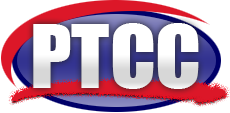Indoor Air Quality Testing
Mold Inspection and Remediation in Maryland
Mold is a common problem in Maryland, potentially causing health issues for those who live and work in affected structures.
What Is Mold?
Molds are microscopic organisms found virtually everywhere, both indoors and out. Molds breed on plants, foods, dry leaves and other organic material. Also susceptible to mold growth are cellulose materials, such as, cardboard, paper, ceiling tiles, and sheet rock, carpet, air conditioning ducts, etc. Mold spores are easily detached and made airborne by vacuuming, walking on a carpet or sitting on a sofa. They become part of the air you, your family, and your co-workers breathe. Mold spores are microscopic in size and invisible to the naked eye.
How Mold Can Affect Your Health
When mold growth conditions are favorable indoors, the growth will often result in increased levels of airborne fungal spores, which can overwhelm the body’s natural defenses. Inhalation of such levels of airborne spores can result in allergic or toxic responses. Exposure to mold is not healthy for anyone although infants, pregnant women, and individuals with existing respiratory conditions are at a higher risk for adverse health effects.
When inhaled, even in small amounts, mold can cause a wide range of health problems including respiratory problems (wheezing), nasal and sinus congestion, watery and red eyes, nose and throat irritation, skin irritation, aches and pains, fevers, asthma, and emphysema.
If you suspect that your property, or a property you are considering purchasing, is plagued with mold growth, call PTCC Mold. We’ll determine the extent of your mold problem, if one does exist, and recommend steps for professional removal.
Specimen Collection
Your field representative’s training ensures that, throughout this portion of the inspection, there is consistency in collection protocols, minimizing the possibility of sample contamination. Specialized equipment allows us to collect specimens from: The air, surfaces and inside wall cavitys and HVAC system.
Indoor Air
It is primarily these samples that determine airborne mold spore counts. [Proximate outdoor air is also tested for the control sample]. For reliable results, the equipment used includes a controlled volume air pump, which draws air through a micro 5™ cassette (spore trap) at 5 liters per minute (lpm). Pump controls are adjusted using a field rotameter that has been calibrated to a primary standard. Spore trap test results are reported as the number of spores found per cubic meter of air. Spore trap air samples are not cultured, and test results include counts of both living and dead* spores (as well as pollen). This test is referred to as a “snapshot” of the air at the exact time of sampling, and is used to determine the mold genera that are present.
Laboratory Results
The specimens analysis report (an example can be seen here) is interpreted for you, following industry-standard analytical methods. The report includes quantitative findings for each of the following fungal spore varieties. Items with further descriptions are italicized:
Amerospores
Arthrinium
Aspergillus
Penicillium
Aureobasidium
Basidiospores
Bipolaris
Dreschlera
Chaetomium
Cladosporium
Conidia, unidentified
Curvularia
Fusarium
Memnoniella
Nigrospora
Oidium/Peronospora
Pithomyces/Ulocladium
rusts
smuts/Myxomycetes/Periconia
Stachybotrys
Stemphylium
Torula
Click here to read about Mycotoxins
For immediate assistance call 301-725-6459 or Email us on our contact us page.
